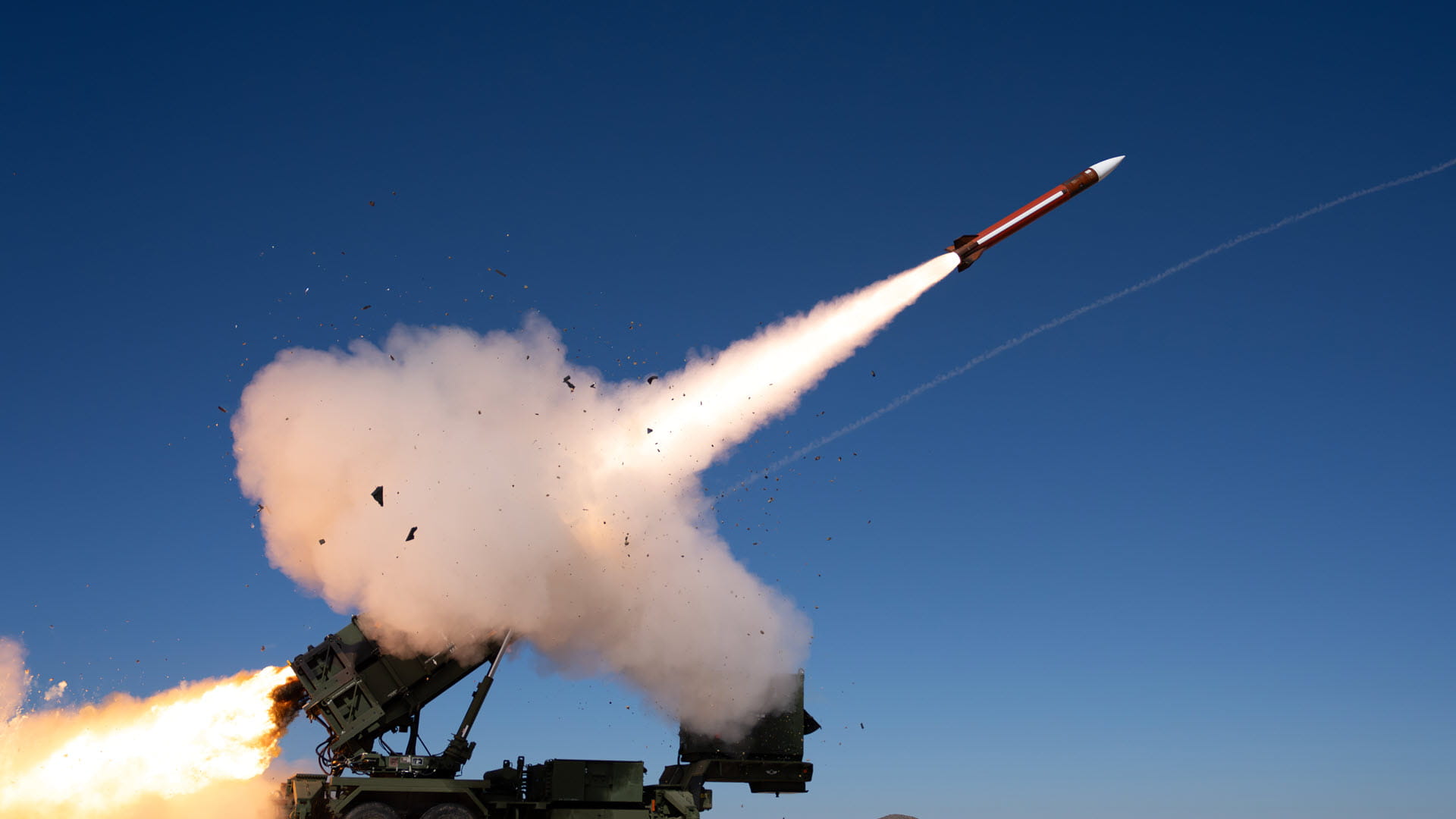Reached operational capability in 1994 and was first deployed by the Royal Norwegian Air Force
Defending the skies together: Partnership powers the NASAMS system’s success
Raytheon-Kongsberg system is proving itself – in demos and in combat
On a rocky island off the coast of Norway, Michael Sadlowski watched as a surface-to-air missile launcher pointed up into a dark nighttime sky.
In the distance, a target playing the role of a cruise missile approached. The launcher swiveled, popped open one of the six doors on its face and, with a flash and a cloud of smoke, sent an interceptor straight at the target.
The scene played out several times that day in 2022 during Trident Elding, a demonstration that showed the NASAMS system – codeveloped by Raytheon, an RTX business, and the Norwegian company Kongsberg Defence & Aerospace – could engage multiple targets with various interceptors.
“It was one of the best things we ever did,” said Sadlowski, an associate director of requirements and capabilities at Raytheon. “We learned a lot about how those missiles flew.”
The demonstration validated and symbolized two major features of the NASAMS system: its flexibility – specifically its ability to fire multiple types of missiles – and the 30-year international partnership that has helped make it a sought-after air defense system around the world.
NASAMS system
A medium-range air-defense system codeveloped by Raytheon and the Norwegian company Kongsberg Defence & Aerospace. The system:
Has achieved more than 300 live-fire and combat engagements
Is deployed in the U.S. capital region, and in Norway, Finland, Spain, the Netherlands, Oman, Lithuania, Indonesia, Australia, Qatar, Hungary, Ukraine and one undisclosed country
Uses Raytheon’s Sentinel® radar, and the AIM-9X® SIDEWINDER®, AMRAAM® and AMRAAM-Extended Range missiles
The NASAMS system’s compatibility with multiple interceptors, along with its flexible hardware and software architecture, allow the system to keep up with threats to sovereign airspace.
“Having a multi-missile system gives you an advantage,” Sadlowski said. “The AMRAAM and AIM-9X missiles we use are dual-use – an aircraft or the NASAMS system can use them without any software modifications. They can even be moved between two platforms on the same day.”
The system consists of Raytheon’s Sentinel radar, a multifunction radar that detects, tracks and identifies targets; a command-and-control center and a launcher built by Kongsberg that can fire three Raytheon-made effectors: the AIM-9X SIDEWINDER, AMRAAM and AMRAAM-Extended Range missiles.
Integrating those parts has been a key to the system’s success, said Joe DeAntona, Raytheon’s vice president of requirements and capabilities for Land and Air Defense Systems.
“In the old days, it was a single system and closed architecture,” he said. “We have been on a journey, and Raytheon has led that journey to create a fully integrated air defense solution.”
The partnership between Raytheon and Kongsberg pays off in several ways; Raytheon’s sensor systems provide proven technical expertise, while Kongsberg’s command and control and networks provide highly flexible capabilities. And each company brings a distinct business approach, said Kjetil Reiten Myhra, executive vice president of defense systems at Kongsberg Defence & Aerospace.
“Raytheon brings to the NASAMS system exceptional air defense capabilities and experience in sensors,” Myhra said. “Together, we are smarter and faster, and pushing the boundaries. You get the best of both worlds that meets the needs of many nations.”
The result, he said, “saves lives every day.”
Since the Trident Elding testing exercise, the NASAMS system has proven itself in actual combat scenarios. The system has been defending Ukrainian airspace since the Russian invasion and performing well in the field, DeAntona said.
“It’s been a game changer,” he said. “There’s no better compliment to a system’s capability than it being used for its intended purposes.”
With the NASAMS system’s operational ability to house and fire three missile variants and its collaborative software architecture, along with the international community’s demand for it, the system remains primed to meet customer needs.
“As threats evolve, so does the system,” Sadlowski said. “That flexibility not only enhances capabilities, but also gives the customer a logistical, operational and financial advantage.”




